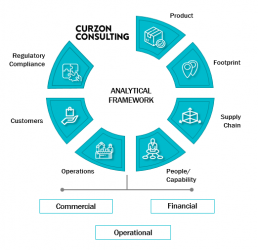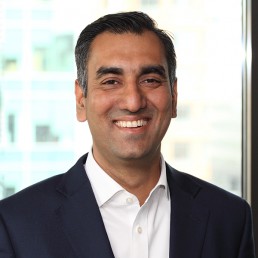The global COVID-19 pandemic has provoked the need for businesses to re-assess their footprint and cost base across the supply chain. John Mason, Manufacturing & Engineering Services Partner at Curzon Consulting, considers the case for structural change.
Re-assessing cost after COVID-19
The COVID-19 crisis has altered the landscape for many. Some have already acted to reduce staff numbers and consolidate operations as an initial response to falling revenues. Structural change and a lower cost base may be required to adapt for the longer term driven by:
- Altered demand volumes, market location and mix of products and services as markets and the customer base evolves
- New regimes to protect health and wellbeing that change how people can work
- The increasing de-globalisation trend, prompting a re-think on the resilience of supply chains and moves to localise
The scenarios and options for each business will be different and the ‘best fit’ answer will not necessarily be obvious.
Considering the case for structural change
Supply-side capacity
- What capacity is needed now and for the medium term? Can excess capacity be re-purposed to meet expected new demand or is consolidation possible?
- Restructuring the footprint is an opportunity to deliver a step change in the cost base and renewed focal points for future investments
Network view
- How fit for purpose are existing facilities now? Can a more cost-effective and resilient model be found by looking at the network as a whole?
- Potential changes to both demand and supply-side environments will impact the economics of the current model and an holistic view is needed
Supply chain
- Will customers demand more localised sourcing to reduce interruption risk in their business-critical supply chains? Is a pre-emptive move to adapt the footprint more attractive than a reactive one?
- Sourcing and certifying new suppliers may be a critical dependency for re-locating production. It is also an opportunity to re-think make-buy strategies, secure new capabilities, strengthen key supplier relationships and unlock cost savings
Overhead right size
- What opportunities from changed working practices should now be evolved to deliver a lower overhead cost model?
- Remote working, greater comfort with and reliance on technology, and demonstrated operation with reduced indirect staffing levels creates new baselines for the operating model
Digital evolution
- What opportunities are created through a reshaping of the footprint to accelerate adoption of digital technologies?
- Relocation of capabilities to be better aligned with future demand will require assessment of products, processes, assets, resources and technology infrastructure. Introduction of technology to deliver cost and service advantage may be achieved in a more concentrated way, more quickly and with greater impact as part of a footprint reshape than through retrofit in a sub-optimal model
Affordability
- How will transition be funded and what prioritisation is required? A balanced-risk business case and plan are needed
- Parallel effort to drive out non-value-add activity, reduce working capital and target efficiencies in the current model will create additional headroom to manoeuvre
Having dealt with the immediate threat from COVID-19, executives, stakeholders and shareholders are now turning their attention to what comes next.
Businesses that are proactively considering the options now will be better placed to make the right moves to sustain and grow.
How we can help
We have broad experience of working with industrial clients to deliver higher levels of profitability and resilience by optimising the cost base, with managed risk and without compromising business value-add service delivery.
Our bespoke Assessment Model is a tried and tested approach balancing commercial, financial and operational considerations. We can rapidly examine the possibilities, frame the options and quantify the associated benefits and risks to underpin confident decision-making.
We bring a business-led focus, an insight-driven approach and a pragmatic attitude to help our clients make informed decisions. And where needed we assist in delivering the business case.

Contact us to explore how to deliver a more resilient and cost optimised business in a post-COVID environment.





